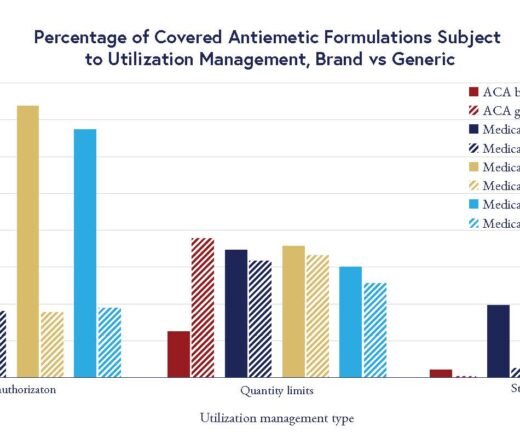
Insurers’ Utilization Management Tools Vary Widely on Anti-Nausea Drugs for Cancer
Chart of the Day: LDI Researchers Report Major Coverage Differences Across ACA and Medicaid Plans, Affecting Access to Drugs That Treat Chemo-Related Nausea
Blog Post

This summer, Congress passed some of the most significant changes in the history of the Supplemental Nutrition Assistance Program (SNAP). The new law does not directly alter the program’s income eligibility levels. Instead, millions are expected to lose benefits due to new requirements, including expanded work requirements for people aged 50 to 64 and the elimination of exemptions for veterans, people experiencing homelessness, and youth aging out of foster care.
Recent research from LDI Fellows underscores the power of administrative policies in shaping enrollment and the effectiveness of public programs like SNAP. Using data from 2009-2019, Sameed Khatana, Scott Lorch, and Atheendar Venkataramani examined whether differences in state-level SNAP policies involving eligibility and administrative burden were linked to county food insecurity rates. Their analysis found that policy choices reducing barriers in SNAP’s application and administration processes may help lower food insecurity.
Food insecurity, defined as inadequate access to healthy food, is associated with worse health outcomes, even death. SNAP is the nation’s largest government-funded program providing food-purchasing assistance, with about 42 million participants each month in 2024. Its eligibility criteria and benefit levels are set nationally, but the program is administered at the state level, and policies for eligibility assessment and administrative burden vary by state.
For example, states decide whether to exclude vehicles from asset tests or require fingerprinting of participants. In 2023, among individuals with household incomes up to 200% of the federal poverty level, state SNAP participation rates ranged from 18.7% (Wyoming) to 97.9% (Washington, D.C.). Understanding the relationship between administrative policies, enrollment, and food insecurity is important for determining how changes that remove or add barriers—such as the changes in H.R.1, “The One Big Beautiful Bill Act”, are likely to impact food insecurity. Khatana explains, “While such policies have been shown to influence SNAP participation, how they impact rates of food insecurity across the U.S. was not previously known.”
Beyond SNAP policy differences, states also differ in other economic and demographic factors associated with food insecurity, so the researchers used an analytic approach that accounts for such potential confounding factors, including how they change over time. They assigned “SNAP policy index” scores based on each state’s level of adoption of policies linked to high SNAP participation and found that increases in the SNAP policy index were associated with both higher state-level SNAP participation rates and lower food insecurity. They then simulated potential policy changes and found that an estimated 6.5 million fewer people would experience food insecurity if all states had adopted policies equivalent to the most generous state in each year, compared to if all states had adopted policies equivalent to the least generous state. Khatana notes, “The findings suggest that lowering administrative burdens and stigma around SNAP participation may have a meaningful impact on the food security status of millions of Americans.”
The statistics in the study were compiled from publicly available data on SNAP policies, SNAP enrollment, and food insecurity. But in October, the Trump administration announced it would no longer publish food insecurity data.
The expanded SNAP work requirements took effect Sept. 1, 2025, and more changes are coming soon. New requirements for state funding will put more pressure on state budgets and may prompt states to revise their eligibility policies. Given the magnitude of upcoming changes, it will be important for the public and policymakers to continue examining the relationship between administrative policy changes, program enrollment, and key outcomes like food insecurity.
The study “Supplemental Nutrition Assistance Program Policies and Food Insecurity” by Sriya Potluri, Atheendar Venkataramani, Scott Lorch, Nicholas Illenberger, and Sameed Khatana was published in the December 12, 2025 issue of JAMA Health Forum.


Chart of the Day: LDI Researchers Report Major Coverage Differences Across ACA and Medicaid Plans, Affecting Access to Drugs That Treat Chemo-Related Nausea

A Penn LDI Virtual Panel Looks Ahead at New Possibilities

Insurers Avoid Counties With Small Populations and Poor Health but a New LDI Study Finds Limited Evidence of Anticompetitive Behavior

The Evidence Suggests a Ban on Ads May Not Be A Well-Targeted Solution

Study of Six Large Language Models Found Big Differences in Responses to Clinical Scenarios

A Major Federal Value-Based Purchasing Program Was Designed to Cut Hospital Readmissions. LDI Fellows Say the Incentives Are Too Small to Drive Real Change